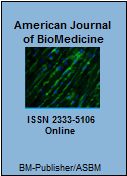
![]()
Women undergoing IVF procedures tend to have high levels of estradiol hormone because of the drugs used to stimulate egg production, and this may lead to display cervical cytomorphological changes & may affects pregnancy outcome in IVF cycles. The aim of the study is to correlate serum estradiol level on preovulatory day in women undergoing IVF/ICSI with cytomorphological changes in cervix and pregnancy test result. In this prospective case-control study, a total 100 cases were included 50 case group and 50 control group both in age range between (20-44) First blood sample to test serum estradiol taken on day 2 of menstrual cycle in both groups and second blood sample taken in preovulatory in both case and control group. Serum estradiol measured by Minividas. Cervical pap smear taken in preovulatory day in both case and control groups and stained with conventional pap stain then assessed according to Bethesda system 2001. There is non-significant correlation between serum estradiol in preovulatory day and appearance of abnormality in pap smear reports (P value=0.9). There is non-significant correlation between serum estradiol in preovulatory day and pregnancy test result (P value =0.5). In conclusion, serum estradiol does not have an association with IVF outcome and does not affect pap smear outcome.
Keywords: Estradiol; Preovulatory; IVF/ICSI
Copyright © 2019 by The American Society for BioMedicine and BM-Publisher, Inc.
- Nichols H. Estrogen is the primary female sex hormone. Among other roles, it promotes the development and maintenance of female characteristics in the human body. MNT 206;
- National Academy of Science. Estrogen affects IVF success Web MD, 2016
- Borawski D, Bluth MH. Reproductive function and pregnancy. In: McPherson RA, Pincus MR, eds. Henry's Clinical Diagnosis and Management by Laboratory Methods. 22nd ed. Philadelphia, PA: Elsevier Saunders; 2011:chap 25.
- Carmina E, Stanczyk FZ, Lobo RA. Laboratory assessment. In: Strauss JF, Barbieri RL, eds. Yen and Jaffe's Reproductive Endocrinology. 7th ed. Philadelphia, PA: Elsevier Saunders; 2014:chap 34.
- Gruber HA, Farag AF. Evaluation of endocrine function. In: McPherson RA, Pincus MR, eds. Henry’s Clinical Diagnosis and Management by Laboratory Methods. 22nd ed. Philadelphia, PA: Elsevier Saunders; 2011:chap 24.
- Lin Y, Lan K, Huang F, et al. Reproducibility and clinical significance of pre-ovulatory serum progesterone level and progesterone/estradiol ratio on the day of human chorionic gonadotropin administration in infertile women undergoing repeated in vitro fertilization cycles. Reproductive Biology and Endocrinology 2015;13:41.
- Boon J. Study redefines role of estrogen in cervical cancer. National Cancer Institute (NCI) and the University of Oklahoma Health Sciences Center 2015.
- Foster J. Natural protection against estrogen overload. 2000.
Who Can Become a Reviewer?
Any expert in the article's research field can become a reviewer with American Journal of Biomedicine. Editors might ask you to look at a specific aspect of an article,...
Thank you for visiting American Journal of BioMedicine. * = Required fields
Error: Contact form not found.
Topic Review
DOI: http://dx.doi.org/10.18081/2333-5106/017-2/99-104
American Journal of BioMedicine Volume 7, Issue 2, pages 90-96
Received December 30, 2018; Accepted April 21, 2019; Published May 23, 2019
How to cite this article
Abd-Al-Fatah RS, Al-wasiti E, Qasim B. Assessment of serum estradiol effect on cervical cytomorphological changes in infertile women undergoing IVF/ICSI. American Journal of BioMedicine 2019;7(2):90-96.
Article outline
1. Abstract
2. Keywords
3. Introduction
4. Methods
5. Results
6. Discussion
7. References


